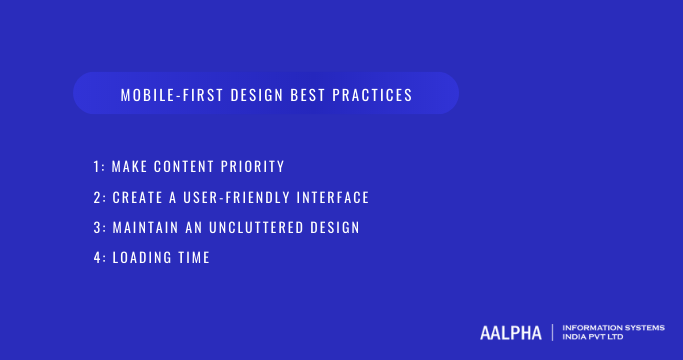Mobile devices have grown in popularity among internet users over the last decade. Mobile devices accounted for approximately 54% of global web traffic in the first quarter of 2021.
With the rapid growth of mobile users, it is critical to adopt new website development methods such as the mobile-first approach.
Here, we’ll discuss mobile-first design, why it’s critical, and how to implement it.
Mobile-First Approach (MFA)?
Luke Wroblewski pioneered the mobile-first method in 2010. It urged web designers to begin the website design process with mobile devices before adding additional functionality for desktops.
In a nutshell, you should optimize your website for mobile devices to enhance the user experience. If users can easily obtain what they want, they are more likely to purchase your services or products.
Many people conflate the terms “mobile-first” and “mobile-friendly.” While these terms appear to be synonymous, they have distinct meanings. Due to optimized website settings, users can easily read and navigate it without manually changing settings. On the other hand, a mobile-first website is built for mobile devices first and then optimized for desktops.
Why is it Critical to Have a Mobile-First Design?
Previously, websites were mainly developed for computers, thus the term “desktop-first strategy.” The primary disadvantage of this method is that most animations and other features do not operate properly on mobile devices. This degrades the experience of mobile users. Additionally, developers must remove certain critical parts from the website to make it mobile-friendly. A mobile-first strategy may assist in addressing these concerns.
Another compelling reason to prioritize mobile is that mobile now accounts for over half of all online traffic. Thus, ensuring that your digital items are readily available to mobile customers entails providing them with a superior user experience.
Additionally, optimizing your website for mobile might help you enhance your search engine rating. Google just stated that it would by default, enable mobile-first indexing. All websites built after July 2019 will be indexed mobile-first by default.
The Mobile-First Design Best Practices
The following are some recommended practices for implementing a mobile-first design strategy on your website:
-
Make Content Priority
The first step in developing a mobile-first design is to establish content priorities. In other words, you must categorize material into main, secondary, and tertiary categories.
Because mobile devices have a limited screen area, you should prioritize displaying critical information. For instance, if you’re creating a restaurant’s website, you
must consider the expectations of a mobile user upon arrival. You must provide vital information on your website (such as your location, operation hours, and contact information).
-
Create a User-Friendly Interface
Navigation is a critical component in determining the success of a website. Ineffective navigation costs you visitors and conversions. As a result, you should build your website to allow users to move effortlessly between pages.
To put it simply, your website should be mobile-friendly. Your visitors should be able to locate the information they are looking for.
When creating a website for mobile visitors, keep the website navigation bar as simple as feasible. As a result, you may customize the navigation buttons by adding connections to additional content. Utilizing a hamburger menu is one method to accomplish.
-
Maintain An Uncluttered Design
When consumers use their mobile devices to access the internet, they navigate with their thumbs, not their mice. Therefore, ensure that your website’s content is readily accessible.
Simplicity is a virtue when it comes to mobile-first design. Consider the following scenario: a person visits your website to get your contact information. They will ultimately quit your website if you continue to display pop-ups or advertisements. Therefore, while developing a mobile-first website, ignore fashionable desktop features.
-
Loading Time
The user experience is highly dependent on the speed of a website. If your website takes longer than a quarter of a second to load, more than a quarter of visitors will leave. As a result, optimizing a website’s speed is critical for preparing it for mobile-first indexing.
Google AMP (Accelerated Mobile Pages) is an effective way to optimize a website for mobile devices and speed it up. It uses compressed HTML, which speeds up the loading time of web pages. Additionally, Google caches website content, resulting in an even faster load time.
Additionally, PWA (Progressive Web Apps) features such as offline support can improve website performance, speed, and user retention rates. Alibaba.com, a leading B2B trading platform, reported an increase of 76 percent in total conversions after switching to a PWA-based website.
Lastly,
A mobile-first approach to web design entails developing websites first for mobile devices before optimizing them for desktops. Preferably display primary components first to improve your website’s mobile user experience. You can customize the navigation bar’s secondary content. Additional strategies for implementing a mobile-first strategy include the following:
- Make it simple for visitors to navigate through all your website’s pages.
- Enhance the site’s performance on mobile devices
- Create and position call-to-action buttons in a way that is comfortable for the thumb.
- Avoid obtrusive pop-up windows and advertisements.
- Conduct routine mobile device testing of your website.
To know more connect with mobile app development company!
Also check: offline first approach





Share This Article:
Written by:
Muzammil K
Muzammil K is the Marketing Manager at Aalpha Information Systems, where he leads marketing efforts to drive business growth. With a passion for marketing strategy and a commitment to results, he's dedicated to helping the company succeed in the ever-changing digital landscape.
Muzammil K is the Marketing Manager at Aalpha Information Systems, where he leads marketing efforts to drive business growth. With a passion for marketing strategy and a commitment to results, he's dedicated to helping the company succeed in the ever-changing digital landscape.